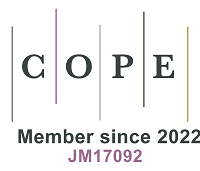REFERENCES
1. Grandjean, P.; Landrigan, P. J. Developmental neurotoxicity of industrial chemicals. Lancet 2006, 368, 2167-78.
2. CDC Stacks. Fourth National Report on Human Exposure to Environmental Chemicals. Updated Tables, March 2021: Volume Three: Analysis of Pooled Serum Samples for Select Chemicals, NHANES 2005–2016. https://stacks.cdc.gov/view/cdc/105344 (accessed 2025-09-29).
3. Landrigan, P. J.; Miodovnik, A. Children’s health and the environment: an overview. Mt. Sinai. J. Med. 2011, 78, 1-10.
4. Au, W. W. Susceptibility of children to environmental toxic substances. Int. J. Hyg. Environ. Health. 2002, 205, 501-3.
5. Flannery, B. M.; Schaefer, H. R.; Middleton, K. B. A scoping review of infant and children health effects associated with cadmium exposure. Regul. Toxicol. Pharmacol. 2022, 131, 105155.
6. O’Connor, L. E.; Spill, M. K.; Trivedi, R.; et al. Mercury exposure and childhood outcomes: an overview of systematic reviews. Environ. Res. 2025, 274, 121196.
7. Gu, Q.; Liu, J.; Zhang, X.; et al. Association between heavy metals exposure and risk of attention deficit hyperactivity disorder (ADHD) in children: a systematic review and meta-analysis. Eur. Child. Adolesc. Psychiatry. 2025, 34, 921-41.
8. Feiler, M. O.; Kulick, E. R.; Sinclair, K.; Spiegel, N.; Habel, S.; Castello, O. G. Toxic metals and pediatric clinical immune dysfunction: a systematic review of the epidemiological evidence. Sci. Total. Environ. 2024, 927, 172303.
9. Issah, I.; Duah, M. S.; Arko-Mensah, J.; Bawua, S. A.; Agyekum, T. P.; Fobil, J. N. Exposure to metal mixtures and adverse pregnancy and birth outcomes: a systematic review. Sci. Total. Environ. 2024, 908, 168380.
10. Tanner, E.; Lee, A.; Colicino, E. Environmental mixtures and children’s health: identifying appropriate statistical approaches. Curr. Opin. Pediatr. 2020, 32, 315-20.
11. de Burbure, C.; Buchet, J. P.; Leroyer, A.; et al. Renal and neurologic effects of cadmium, lead, mercury, and arsenic in children: evidence of early effects and multiple interactions at environmental exposure levels. Environ. Health. Perspect. 2006, 114, 584-90.
12. Koch, W.; Czop, M.; Iłowiecka, K.; Nawrocka, A.; Wiącek, D. Dietary intake of toxic heavy metals with major groups of food products-results of analytical determinations. Nutrients 2022, 14, 1626.
13. Balali-Mood, M.; Naseri, K.; Tahergorabi, Z.; Khazdair, M. R.; Sadeghi, M. Toxic mechanisms of five heavy metals: mercury, lead, chromium, cadmium, and arsenic. Front. Pharmacol. 2021, 12, 643972.
14. ATSDR. ATSDR Substance Priority List. https://www.atsdr.cdc.gov/programs/substance-priority-list.html. (accessed 2025-09-29).
15. Killian, B.; Yuan, T. H.; Tsai, C. H.; Chiu, T. H. T.; Chen, Y. H.; Chan, C. C. Emission-related heavy metal associated with oxidative stress in children: effect of antioxidant intake. Int. J. Environ. Res. Public. Health. 2020, 17, 3920.
16. Sughis, M.; Nawrot, T. S.; Haufroid, V.; Nemery, B. Adverse health effects of child labor: high exposure to chromium and oxidative DNA damage in children manufacturing surgical instruments. Environ. Health. Perspect. 2012, 120, 1469-74.
17. Wong, R. H.; Kuo, C. Y.; Hsu, M. L.; et al. Increased levels of 8-hydroxy-2 -deoxyguanosine attributable to carcinogenic metal exposure among schoolchildren. Environ. Health. Perspect. 2005, 113, 1386-90.
18. Pizzino, G.; Bitto, A.; Interdonato, M.; et al. Oxidative stress and DNA repair and detoxification gene expression in adolescents exposed to heavy metals living in the Milazzo-Valle del Mela area (Sicily, Italy). Redox. Biol. 2014, 2, 686-93.
19. Horn, S. R.; Leve, L. D.; Levitt, P.; Fisher, P. A. Childhood adversity, mental health, and oxidative stress: a pilot study. PLoS. One. 2019, 14, e0215085.
20. Liu, M.; Cheng, Y.; He, J.; Zhang, L.; Li, J.; Tan, L. Association between metal exposure and oxidative stress in preschool children and the moderating role of urinary creatinine. Environ. Chem. Ecotoxicol. 2024, 6, 338-46.
21. Kordas, K.; Roy, A.; Vahter, M.; et al. Multiple-metal exposure, diet, and oxidative stress in Uruguayan school children. Environ. Res. 2018, 166, 507-15.
22. Jaishankar, M.; Tseten, T.; Anbalagan, N.; Mathew, B. B.; Beeregowda, K. N. Toxicity, mechanism and health effects of some heavy metals. Interdiscip. Toxicol. 2014, 7, 60-72.
23. Valko, M.; Morris, H.; Cronin, M. T. Metals, toxicity and oxidative stress. Curr. Med. Chem. 2005, 12, 1161-208.
24. Jomova, K.; Valko, M. Advances in metal-induced oxidative stress and human disease. Toxicology 2011, 283, 65-87.
25. Sun, Q.; Li, Y.; Shi, L.; et al. Heavy metals induced mitochondrial dysfunction in animals: molecular mechanism of toxicity. Toxicology 2022, 469, 153136.
26. Graille, M.; Wild, P.; Sauvain, J. J.; Hemmendinger, M.; Guseva, Canu. I.; Hopf, N. B. Urinary 8-isoprostane as a biomarker for oxidative stress. A systematic review and meta-analysis. Toxicol. Lett. 2020, 328, 19-27.
27. Valko, M.; Rhodes, C. J.; Moncol, J.; Izakovic, M.; Mazur, M. Free radicals, metals and antioxidants in oxidative stress-induced cancer. Chem. Biol. Interact. 2006, 160, 1-40.
28. Ma, E.; Ingram, K. H.; Milne, G. L.; Garvey, W. T. F2-isoprostanes reflect oxidative stress correlated with lean mass and bone density but not insulin resistance. J. Endocr. Soc. 2017, 1, 436-48.
30. Sies, H. Oxidative stress: a concept in redox biology and medicine. Redox. Biol. 2015, 4, 180-3.
31. Pisoschi, A. M.; Pop, A. The role of antioxidants in the chemistry of oxidative stress: a review. Eur. J. Med. Chem. 2015, 97, 55-74.
32. Bhattacharyya, A.; Chattopadhyay, R.; Mitra, S.; Crowe, S. E. Oxidative stress: an essential factor in the pathogenesis of gastrointestinal mucosal diseases. Physiol. Rev. 2014, 94, 329-54.
33. Elmarakby, A. A.; Sullivan, J. C. Relationship between oxidative stress and inflammatory cytokines in diabetic nephropathy. Cardiovasc. Ther. 2012, 30, 49-59.
34. Liguori, I.; Russo, G.; Curcio, F.; et al. Oxidative stress, aging, and diseases. Clin. Interv. Aging. 2018, 13, 757-72.
35. Rahal, A.; Kumar, A.; Singh, V.; et al. Oxidative stress, prooxidants, and antioxidants: the interplay. Biomed. Res. Int. 2014, 2014, 761264.
36. Pizzino, G.; Irrera, N.; Cucinotta, M.; et al. Oxidative stress: harms and benefits for human health. Oxid. Med. Cell. Longev. 2017, 2017, 8416763.
37. Phaniendra, A.; Jestadi, D. B.; Periyasamy, L. Free radicals: properties, sources, targets, and their implication in various diseases. Indian. J. Clin. Biochem. 2015, 30, 11-26.
38. Carroquino, M. J.; Posada, M.; Landrigan, P. J. Environmental toxicology: children at risk. In Environmental Toxicology; Laws, E. A., Eds.; Springer: New York, 2013; pp 239-91.
39. Samsonov, A.; Urlacher, S. S. Oxidative stress in children and adolescents: insights into human biology. Am. J. Hum. Biol. 2025, 37, e24200.
40. Henn B, Coull BA, Wright RO. Chemical mixtures and children’s health. Curr. Opin. Pediatr. 2014, 26, 223-9.
41. Carpenter, D. O.; Arcaro, K.; Spink, D. C. Understanding the human health effects of chemical mixtures. Environ. Health. Perspect. 2002, 110 Suppl 1, 25-42.
42. Frijhoff, J.; Winyard, P. G.; Zarkovic, N.; et al. Clinical relevance of biomarkers of oxidative stress. Antioxid. Redox. Signal. 2015, 23, 1144-70.
43. Queirolo, E. I.; Kordas, K.; Martínez, G.; Ahmed, Z.; Barg, G.; Mañay, N. Secular trends in blood lead concentrations of school-age children in Montevideo, Uruguay from 2009 to 2019. Environ. Pollut. 2024, 343, 123160.
44. Kowalski, K.C., Crocker, P.R.E., Donen, R.M. The physical activity questionnaire for older children (PAQ-C) and adolescents (PAQ-A) manual. 2004. https://www.prismsports.org/UserFiles/file/PAQ_manual_ScoringandPDF.pdf. (accessed 2025-09-23).
45. Hay, A.D., Heron, J., Ness, A.; ALSPAC study team. The prevalence of symptoms and consultations in pre-school children in the Avon Longitudinal Study of Parents and Children (ALSPAC): a prospective cohort study. Fam Pract 2005, 22, 367-74.
46. Poirier, M. J. P.; Grépin, K. A.; Grignon, M. Approaches and alternatives to the wealth index to measure socioeconomic status using survey data: a critical interpretive synthesis. Soc. Indic. Res. 2020, 148, 1-46.
47. Rodríguez, D.; Desai, G.; Barg, G.; et al. Low-level arsenic exposure, childhood neighborhood disadvantage, and executive functions in adolescents from Montevideo, Uruguay. Environ. Res. 2025, 279, 121791.
48. Palmer, C. D.; Lewis, M. E.; Geraghty, C. M.; Barbosa, F.; Parsons, P. J. Determination of lead, cadmium and mercury in blood for assessment of environmental exposure: a comparison between inductively coupled plasma-mass spectrometry and atomic absorption spectrometry. Spectrochim. Acta. B. At. Spectrosc. 2006, 61, 980-90.
49. Kuiper, J. R.; O’Brien, K. M.; Ferguson, K. K.; Buckley, J. P. Urinary specific gravity measures in the U.S. population: implications for the adjustment of non-persistent chemical urinary biomarker data. Environ. Int. 2021, 156, 106656.
50. Textor, J.; van, der. Zander. B.; Gilthorpe, M. S.; Liskiewicz, M.; Ellison, G. T. Robust causal inference using directed acyclic graphs: the R package ‘dagitty’. Int. J. Epidemiol. 2016, 45, 1887-94.
51. Bobb, J. F.; Valeri, L.; Claus, Henn. B.; et al. Bayesian kernel machine regression for estimating the health effects of multi-pollutant mixtures. Biostatistics 2015, 16, 493-508.
52. Kordas, K.; Ghazal, D.; Queirolo, E. I.; Olson, J. R.; Beledo, M. I.; Browne, R. W. Temperature stability of urinary F2-isoprostane and 8-hydroxy-2’-deoxyguanosine. Pract. Lab. Med. 2024, 39, e00373.
53. Li, Y. S.; Kawasaki, Y.; Watanabe, S.; Ootsuyama, Y.; Kasai, H.; Kawai, K. Diurnal and day-to-day variation of urinary oxidative stress marker 8-hydroxy-2’-deoxyguanosine. J. Clin. Biochem. Nutr. 2021, 68, 18-22.
54. Zeng, X.; Tian, G.; Zhu, J.; et al. Air pollution associated acute respiratory inflammation and modification by GSTM1 and GSTT1 gene polymorphisms: a panel study of healthy undergraduates. Environ. Health. 2023, 22, 14.
55. Ashrap, P.; Watkins, D. J.; Milne, G. L.; et al. Maternal urinary metal and metalloid concentrations in association with oxidative stress biomarkers. Antioxidants 2021, 10, 114.
56. Kim, S. S.; Meeker, J. D.; Keil, A. P.; et al. Exposure to 17 trace metals in pregnancy and associations with urinary oxidative stress biomarkers. Environ. Res. 2019, 179, 108854.
57. Zhang, M.; Liu, C.; Li, W. D.; et al. Individual and mixtures of metal exposures in associations with biomarkers of oxidative stress and global DNA methylation among pregnant women. Chemosphere 2022, 293, 133662.
58. Martinez-Morata, I.; Sobel, M.; Tellez-Plaza, M.; Navas-Acien, A.; Howe, C. G.; Sanchez, T. R. A state-of-the-science review on metal biomarkers. Curr. Environ. Health. Rep. 2023, 10, 215-49.
59. Hughes, M. F. Biomarkers of exposure: a case study with inorganic arsenic. Environ. Health. Perspect. 2006, 114, 1790-6.
60. Normandin, L.; Ayotte, P.; Levallois, P.; et al. Biomarkers of arsenic exposure and effects in a Canadian rural population exposed through groundwater consumption. J. Expo. Sci. Environ. Epidemiol. 2014, 24, 127-34.
61. Fewell, Z.; Davey, Smith. G.; Sterne, J. A. The impact of residual and unmeasured confounding in epidemiologic studies: a simulation study. Am. J. Epidemiol. 2007, 166, 646-55.
62. Okubo, H., Nakayama, S.F.; Japan Environment and Children’s Study Group. Periconceptional maternal diet quality influences blood heavy metal concentrations and their effect on low birth weight: the Japan Environment and Children’s Study. Environ Int 2023, 173, 107808.
63. Meyer, K. A.; Sijtsma, F. P.; Nettleton, J. A.; et al. Dietary patterns are associated with plasma F2-isoprostanes in an observational cohort study of adults. Free. Radic. Biol. Med. 2013, 57, 201-9.
64. Whalen, K. A.; McCullough, M. L.; Flanders, W. D.; Hartman, T. J.; Judd, S.; Bostick, R. M. Paleolithic and mediterranean diet pattern scores are inversely associated with biomarkers of inflammation and oxidative balance in adults. J. Nutr. 2016, 146, 1217-26.
65. García-Villarino, M.; Signes-Pastor, A. J.; Karagas, M. R.; et al. Exposure to metal mixture and growth indicators at 4-5 years. A study in the INMA-Asturias cohort. Environ. Res. 2022, 204, 112375.
67. Probst, C.; Monteiro, M.; Smith, B.; Caixeta, R.; Merey, A.; Rehm, J. Alcohol policy relevant indicators and alcohol use among adolescents in Latin America and the Caribbean. J. Stud. Alcohol. Drugs. 2018, 79, 49-57.
68. Pengpid, S.; Peltzer, K.; Rodríguez, M. J. Adolescent health-risk behaviours in Uruguay: patterns from national cross-sectional school surveys conducted in 2006, 2012 and 2019. Trop. Med. Int. Health. 2024, 29, 801-12.
69. JND. Sexta encuesta nacional sobre consumo de drogas en estudiantes de enseñanza media. Uruguay 2014. https://extranet.who.int/fctcapps/sites/default/files/2023-04/uruguay_2018_annex-1_national_survey_on_drug_use_in_high_school_students_2014.pdf. (accessed 2025-09-23).







